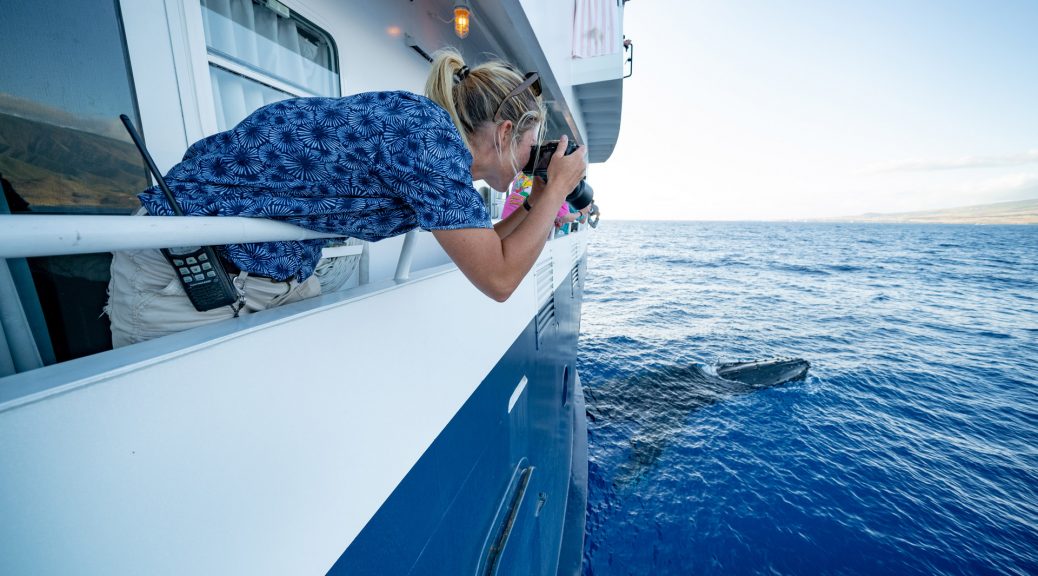
Five Types of Whales Found Near Maui
The opportunity to see whales in the wild is an experience you are sure to never forget! Their intriguing behaviors can include spouting torrents of water out of their blowholes, slapping the water with their massive tails or fins, or even “breaching” the surface to pop their heads out and take a look around. Many types of whales come to breed in the warm tropical waters around the Hawaiian islands before making their migration north to spend their summers in the cold, nutrient-rich waters off the coast of Alaska.
While there are opportunities to view them all across the island chain, Maui is considered the best location. The optimal season for viewing whales tends to be between the months of January and March, though the whale watching season is officially from November to May. While humpback whales tend to steal the show due to their sheer numbers that visit, there are many types of toothed whales and dolphin species that are present in these waters! Come and join in an incredible Maui whale watching experience and learn about the most popular five types of whales that can be found near Maui.

Five Species of Whales You Can Find Near Maui
1. Humpback Whale
Humpback whales, known as koholā here in Hawaii, reach up to 52 feet in length and can weigh as much as 50 tons! They are regarded as “gentle giants” for their grace as they glide slowly through the water. They have great cultural significance for Native Hawaiians and even are included in one creation story from ancient Hawaii. The whales are believed to be aumakua, or guardians, of Hawaiians as they are born in the same waters around Hawaii as the people, and return to have their young.
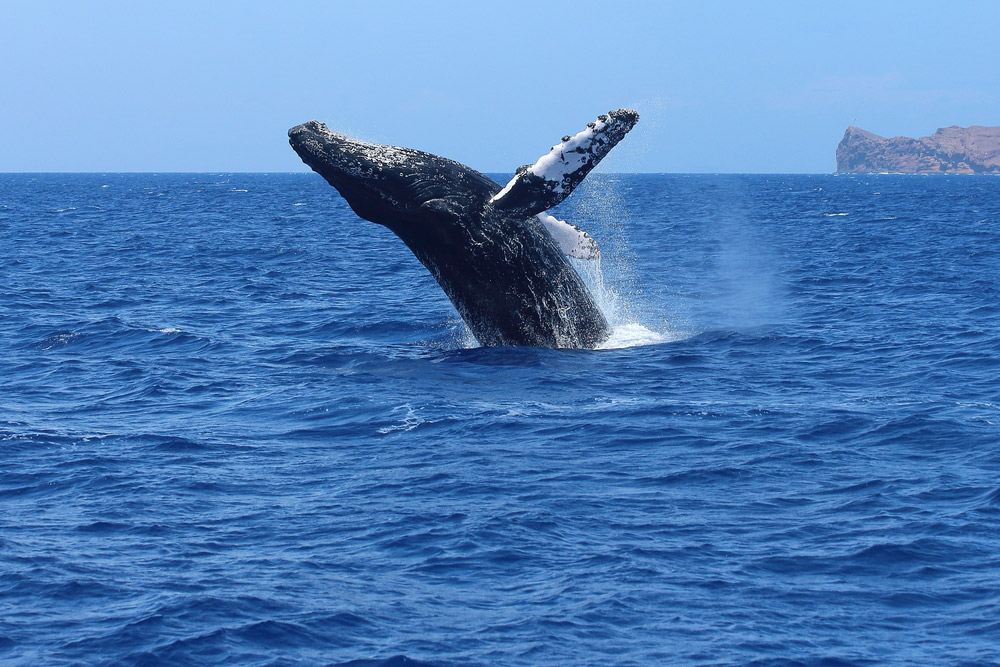
This species spends over 90% of its life under the surface of the water, so it is fortunate that they may be seen in the waters off Hawaii where they come to breed in the winter and spring. In the Auau Channel that runs between West Maui, Lanai, and Molokai, humpback whales are commonly seen before making their migration 3,000 miles north to feed in the nutrient-rich waters off the coast of Alaska and Siberia. This is the only state in the United States where humpback whales come to mate, calve, and nurse their young and is one of the best whale-watching destinations on the planet!
It is thought that the warm water, great ocean visibility, lack of natural predators, and a variety of ocean depths around Hawaii makes for a perfect location to spend the winter and spring months. Humpback whales are listed as an endangered species, protected by both the Endangered Species Act and Marine Mammal Protection Act. These were put into place after international commercial whaling heavily depleted their numbers at the start of the 20th century. Today, it is estimated that over 21,000 humpback whales inhabit the North Pacific Ocean, with over 10,000 being in Hawaii alone!
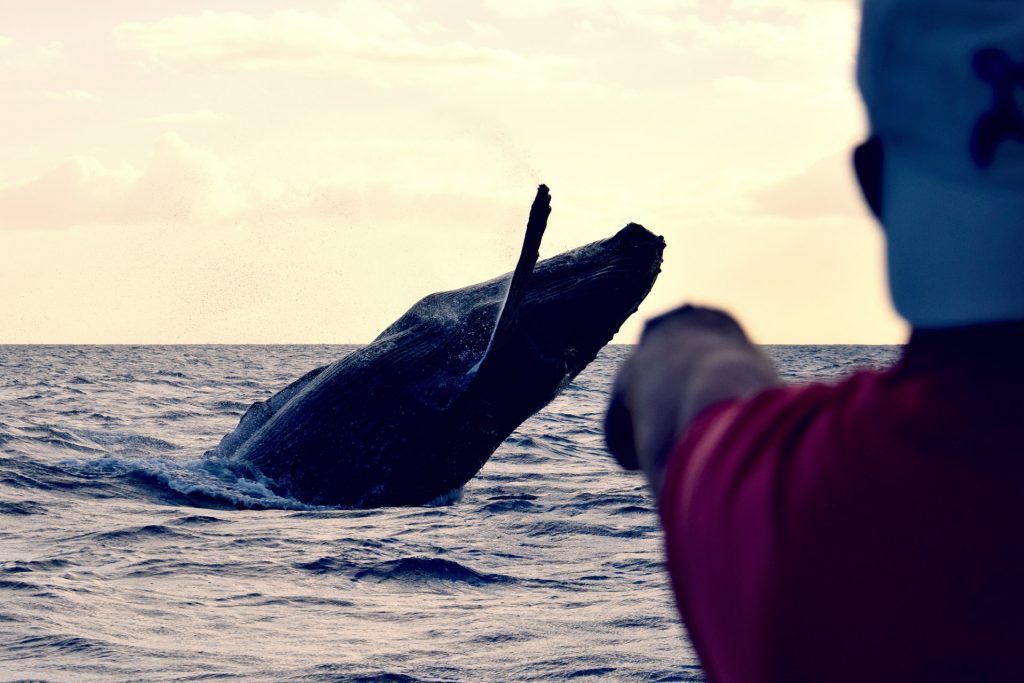
Humpback whales are considered filter-feeders, using baleen, or plate-like mouth bristles, to filter krill and small schooling fishes out of the water and into their giant mouths.
While many species of whales are vocal, humpbacks are especially known for their elaborate and diverse songs! Males are particularly vocal while in their breeding grounds, including here in Hawaii. Because sound travels better in water than in air, you do also have a chance to possibly hear their songs while underwater in the ocean. Keep an eye out for mothers breaching with their calves or the fierce displays of males competing with one another for females! Learn more about whale watching in Hawaii and read an incredible account of a close encounter with humpback whales off the coast of Maui.
2. Short-Finned Pilot Whale
Pilot whales are another type of whale found in Hawaii but actually classify under the dolphin (Delphinidae) family along with killer whales, melon-headed whales, and false killer whales. Second largest of the dolphin family only to killer whales, pilot whales can reach sizes of around 22 feet in length and are identified by their large bulbous heads and wide bodies.
The term “pilot whale” is thought to have originated from the idea that pods were piloted by a leader whale. The species of short-finned pilot whales found in Hawaii is genetically distinct from others found in the Pacific and tend to travel in groups of 25 to 50 individuals. Males tend to leave their birth pod and join another pod, while females will usually remain in the same pod for their lifetime. Females also outnumber males by eight females to every adult male. Pilot whales are a highly social species with strong bonds, and they are rarely seen alone. Some pods even number in the hundreds!
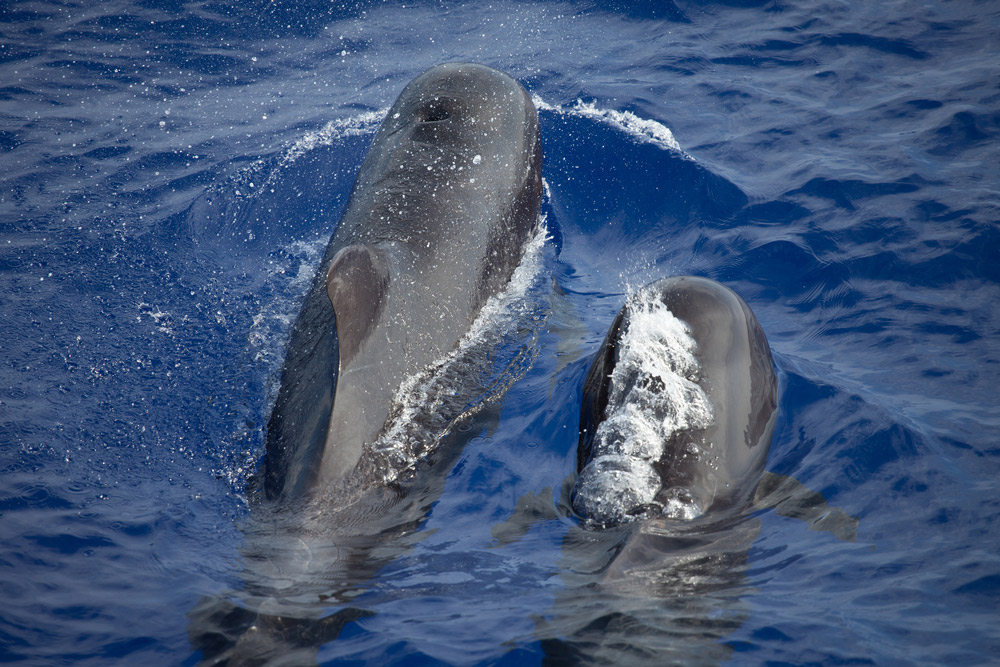
Three types of social organization exist for pilot whale pods: traveling/hunting groups, feeding groups, and loafing groups. Taking advantage of the incredible sonar abilities of these whales while they hunt, oceanic white-tip sharks are commonly seen with pilot whale pods on the hunt. They wait to pick off the scraps of fish schools during the hunt and sometimes even munch on the protein-rich feces of the pilot whales – yum! Moms and their calves can be found in groups loafing or relaxing near stationary, near the surface water basking in the sun.
3. False Killer Whale
Another member of the dolphin family, false killer whales are special rare sight off the waters of Maui. They are now considered an endangered species, identifiable by their small conical beak-lacking heads, dark coloration, and light patches near their chest or throat. They have a distinctive bulge on the front edge of their flippers. While they closely resemble true killer whales (Orca) in appearance, they differ in that they rarely attack mammalian prey, instead favoring mahi-mahi, ahi tuna, ono, monchong, and swordfish in the waters around Hawaii.
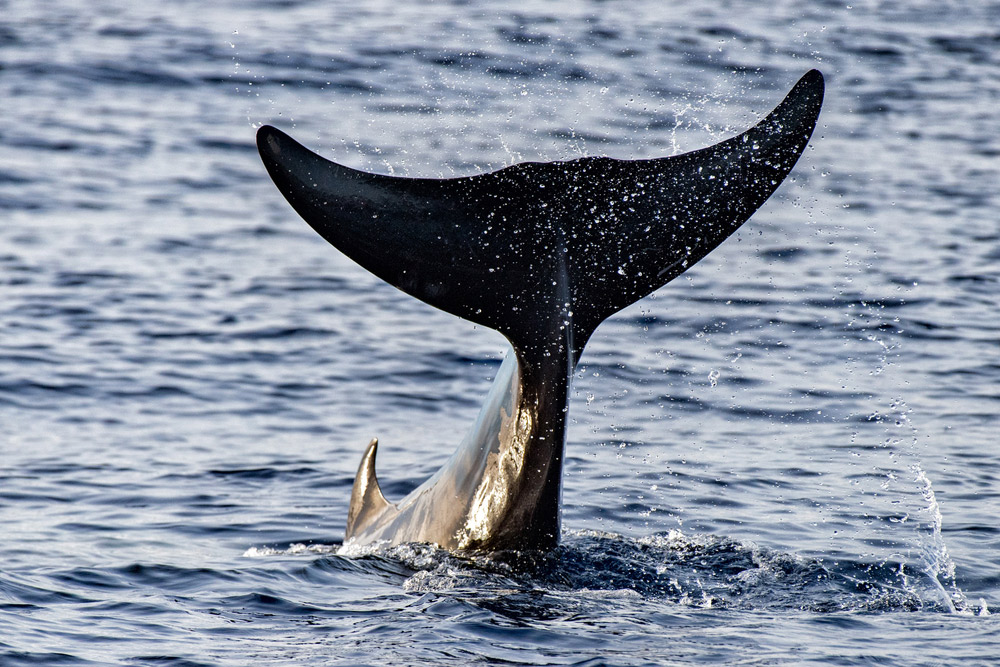
False killer whales are highly social animals, traveling in groups up to 40 individuals that work much like longline fishermen by traveling in a wide band to maximize their catch. Given that their diet mirrors that of humans, they are commonly caught as bycatch from longline fishing and can cause fin disfigurement and death. It is thought that there are only 123 insular (island-dwelling) individuals in Hawaii today.
4. Melon-Headed Whale
Melon-headed whales are a highly social species that travel in large herds in Hawaiian waters. Originally identified in Hawaii in 1841 off the coast of the Big Island, melon-headed whales are found most commonly in tropical and subtropical waters. These are dark gray or black-colored toothed whales that are identifiable by a large bulge in their forehead and are about 9 feet long and weigh in at around 500 pounds. They are found more frequently in the deep sea, at depths of over 6,000 feet.
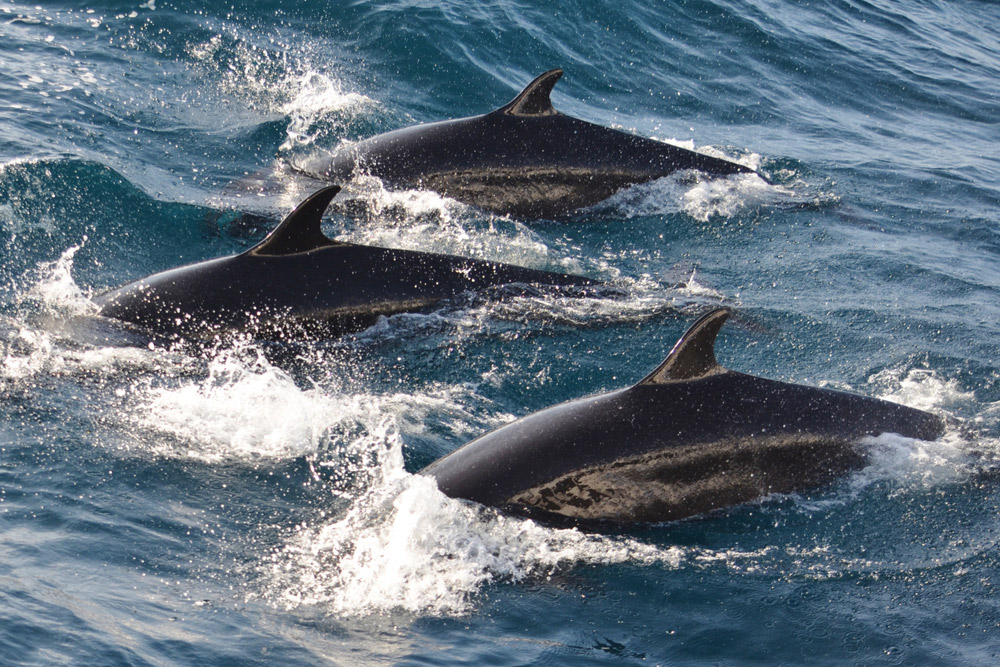
Somewhat shy to humans at first, melon-headed whales tend to warm up and “spy hop” or breach their heads above the water to snag a closer look. They are social within their groups and exhibit behaviors of swimming side-by-side and sometimes can be seen resting a flipper on another whale or rubbing their heads on each other. Their diet consists of small fish, shrimp, and large squid. Melon-headed whales are commonly spotted with other cetaceans, including rough-toothed dolphins and short-finned pilot whales.
5. Cuvier’s Beaked Whale
The last of Hawaii’s five types of whales – Beaked whales – can be secretive, seldom seen by humans, and were still being identified well into the 1900s. They have the extraordinary ability to be able to dive for long periods and to depths of around 3,500 feet, which make them the deepest-diving air-breathing animals known to mankind!
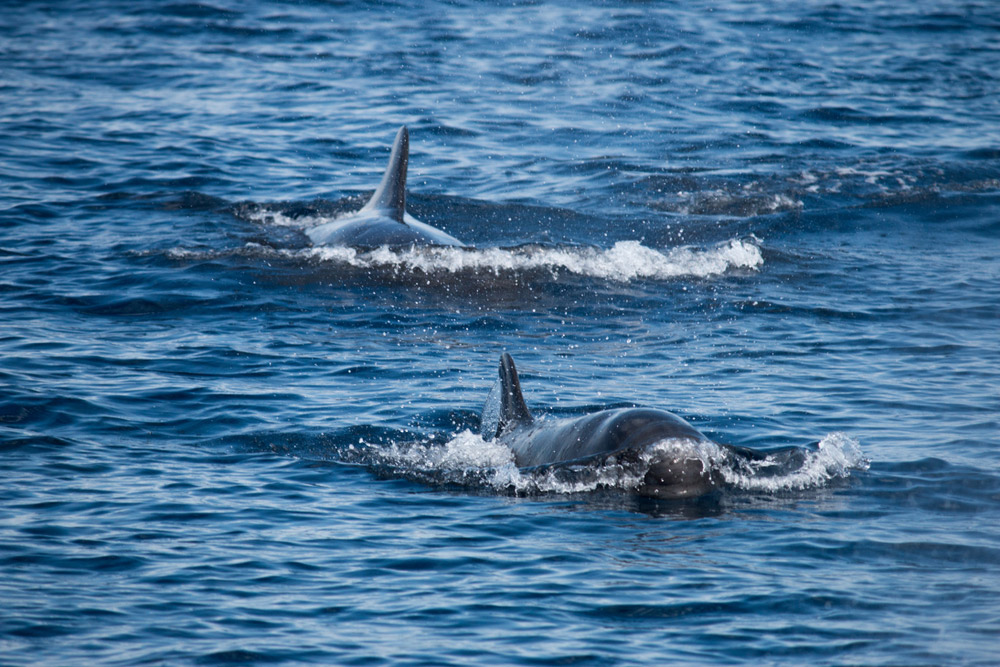
Cuvier’s beaked whales seem to be the most abundant of the beaked whales, with foreheads that slope off gently to a beak and have two teeth that are visible while their mouths are closed. Older males tend to travel solo, while groups consist of about 10 individuals. Diving for around 20-40 minutes they are sometimes observed breaching the surface after these especially long dives.
Whale Watching Tips
- Bring sun protection! This can include a hat, sunscreen, and sun-shielding clothing.
- Binoculars or a camera with a telephoto zoom lens are great to peer out over the ocean and see these magnificent creatures up close! Keep in mind that state law mandates that boats and observers stay at least 100 yards away from whales.
- Later in the day or in poor weather conditions, consider bringing a jacket to stay warm out on the open ocean.
- If you’re prone to seasickness, take a preventative motion sickness medicine an hour before climbing aboard a boat. Ginger and motion sickness bands can also help!
- Spot whales from shore with a pair of binoculars, looking for whale spouts or even a tail or pectoral fin slap on the surface!
- Find a sustainable whale watching tour on the Hawaii Ecotourism Association website.
Maui Travel Guide
Check out our Maui Travel Guide, which is useful to both first-time visitors and to seasoned Maui aficionados.







